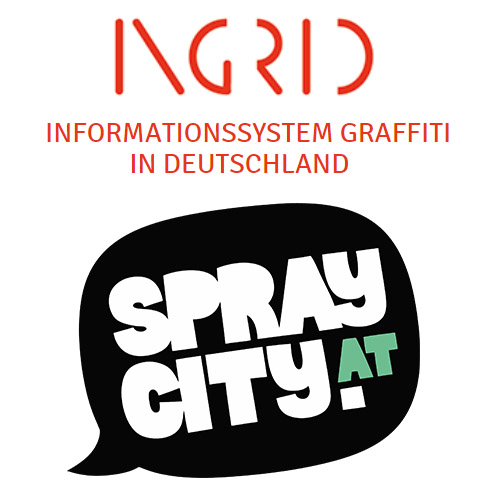Graffiti is a very peculiar form of heritage that covers many facets of an urban landscape, ranging from colourful street art on large walls to waste-bin writings that carry much historical and socio-political baggage. INDIGO wants to ensure the survival of a large part of Vienna’s graffiti landscape via local community engagement and scientific documentation through time. Both in its goal setting and project execution, INDIGO aims to be innovative.
Graffiti research is mainly done by anthropologists, sociologists, and art historians. Since these fields place the artists above their work (Blanché, 2015), proper documentation of ever-changing graffiti has never gotten the attention some scholars have asked for (Masilamani, 2008).
Although online archives like http://globalstreetart.com, http://grafarc.org, https://www.urbanlayers.city or https://www.streetartfinder.de exist, they all feature partial and biased graffiti records with incomplete and unstandardised metadata (de la Iglesia, 2015). Some online archives like SprayCity and INGRID are more comprehensive but lack photographic colour accuracy, extensive metadata querying, 3D visualisation, and – in the case of INGRID – free access.

In short, the INDIGO project will be the first to create a
long-term, accurate and exhaustive
open-access plus interactive
graffiti archive covering an
extensive urban space.
Systematic follow-up and local community engagement will tackle graffiti’s ephemeral nature. This total photographic coverage and subsequent image processing yield records that explicitly store every graffito’s spatial, spectral, and temporal dimensions.
In contrast to archives that serve graffiti as a collection of photographs or icons on a map, INDIGO visualises graffiti in 3D, thus enabling the exploration of graffiti in its correct urban setting. Besides, this visualisation platform can extract the graffiti lifespan from the OpenAtlas database, allowing users to query and visualise graffiti temporally. “Are certain artists more prone to overpainting than others?” or “What type of graffiti does one see around the elections?” are insights INDIGO enables.
The database structure is based on a heritage-specific ontology (CIDOC CRM) and a unique thesaurus: a finite set of graffiti and street art terms with hierarchical relations. This thesaurus makes INDIGO’s vocabulary and concepts explicit for the whole research community, thereby providing terminological clarity.
A certified data repository stores all graffiti records, ensuring much needed but often neglected data accessibility and digital longevity.
Through its total-inclusive participation with the broader graffiti community (i.e. scholars and graffitist), INDIGO strives to become a graffiti hub of data, information, and knowledge sharing, enabling renewed relevance and innovation in scientific, touristic, and socio-cultural ways.
